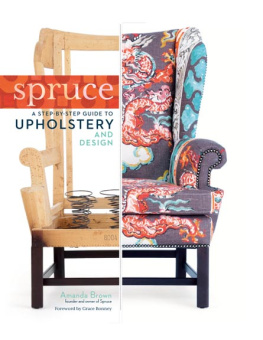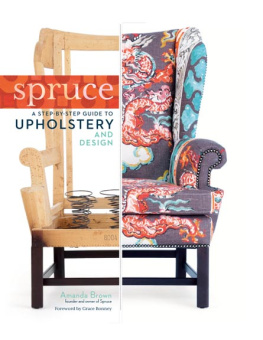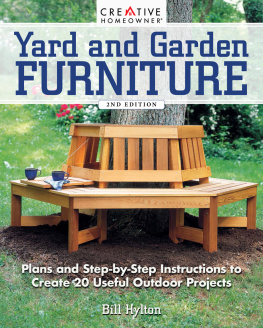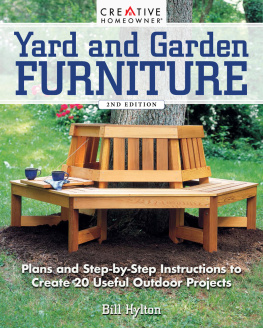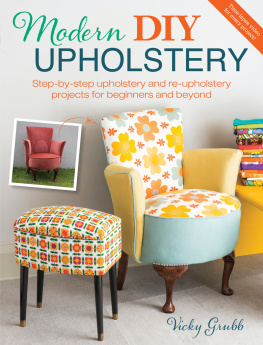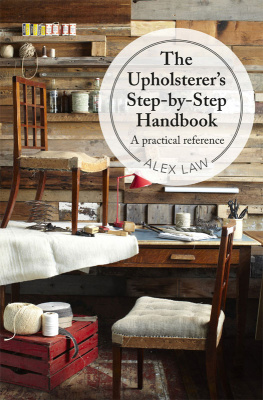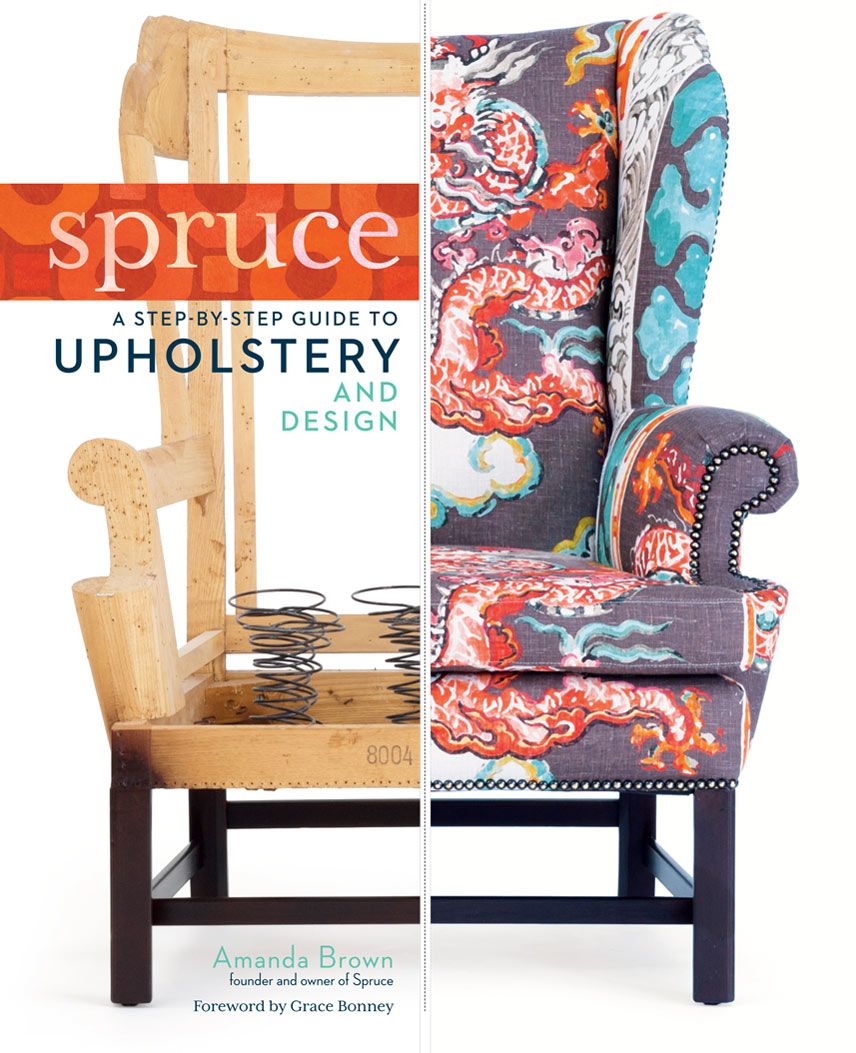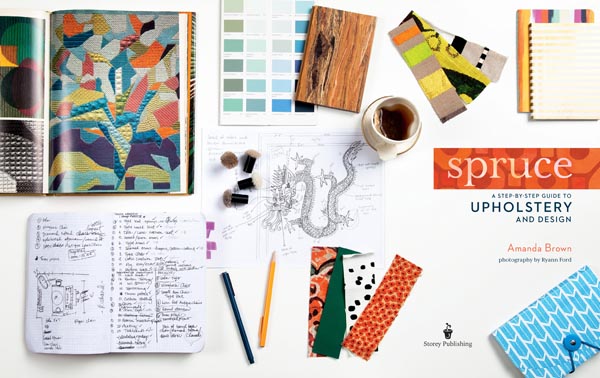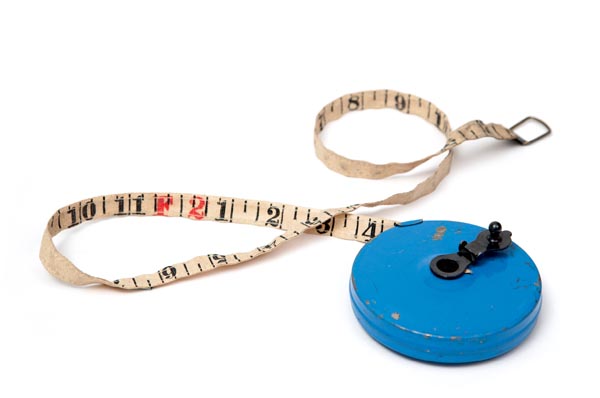The mission of Storey Publishing is to serve our customers by publishing practical information that encourages personal independence in harmony with the environment.
Edited by Deborah Balmuth and Pam Thompson
Art direction and book design by Alethea Morrison
Text production by Jennifer Jepson Smith
Photography by Ryann Ford, except for Amanda Brown: design inspiration sections, wingback chair (Chapter 18), zipper feet and welt cord foot (Appendix); Nataliya Dvukhimenna/123RF.com: diamond tufting diagram background (Chapter 19); and 7io/iStockphoto.com: dragon drawing background (Chapter 1)
Photo styling of interiors by Jenny OConnor
Illustrations by Allegra Lockstadt, with an additional illustration: dragon drawing (Chapter 1) by Amanda Brown
Fabric pattern illustrations by Allegra Lockstadt
Cutting layout illustrations by Ilona Sherratt
2013 by Amanda Brown
Ebook design and production by Dan O. Williams
Ebook version 1.0
October 28, 2013
All rights reserved. No part of this book may be reproduced without written permission from the publisher, except by a reviewer who may quote brief passages or reproduce illustrations in a review with appropriate credits; nor may any part of this book be reproduced, stored in a retrieval system, or transmitted in any form or by any means electronic, mechanical, photocopying, recording, or other without written permission from the publisher.
The information in this book is true and complete to the best of our knowledge. All recommendations are made without guarantee on the part of the author or Storey Publishing. The author and publisher disclaim any liability in connection with the use of this information.
Storey books are available for special premium and promotional uses and for customized editions. For further information, please call 1-800-793-9396.
Storey Publishing
210 MASS MoCA Way
North Adams, MA 01247
www.storey.com
Contents
Yard by yard, life is hard. Inch by inch, its a cinch.
Unknown
Foreword
Ive been known to say that if I ever won the lottery, the first thing I would do is have all of my furniture upholstered in beautiful patterned fabric. And if I had my first choice of upholsterers, that person would be Amanda Brown.
When I was younger, I thought of upholstery as something only fancy or stuffy people had done. I remembered all of the scratchy formal couches my grandparents had and couldnt imagine ever being interested in such a thing. But in 2003, everything changed. I moved to Brooklyn, started immersing myself in the design world, and was blown away by all of the beautiful textile designs coming out from younger artists. Their fabrics were affordable, fun, and the opposite of stuffy. But unfortunately, no one seemed to be doing anything with them other than making pillow after pillow. Then I discovered Spruce.
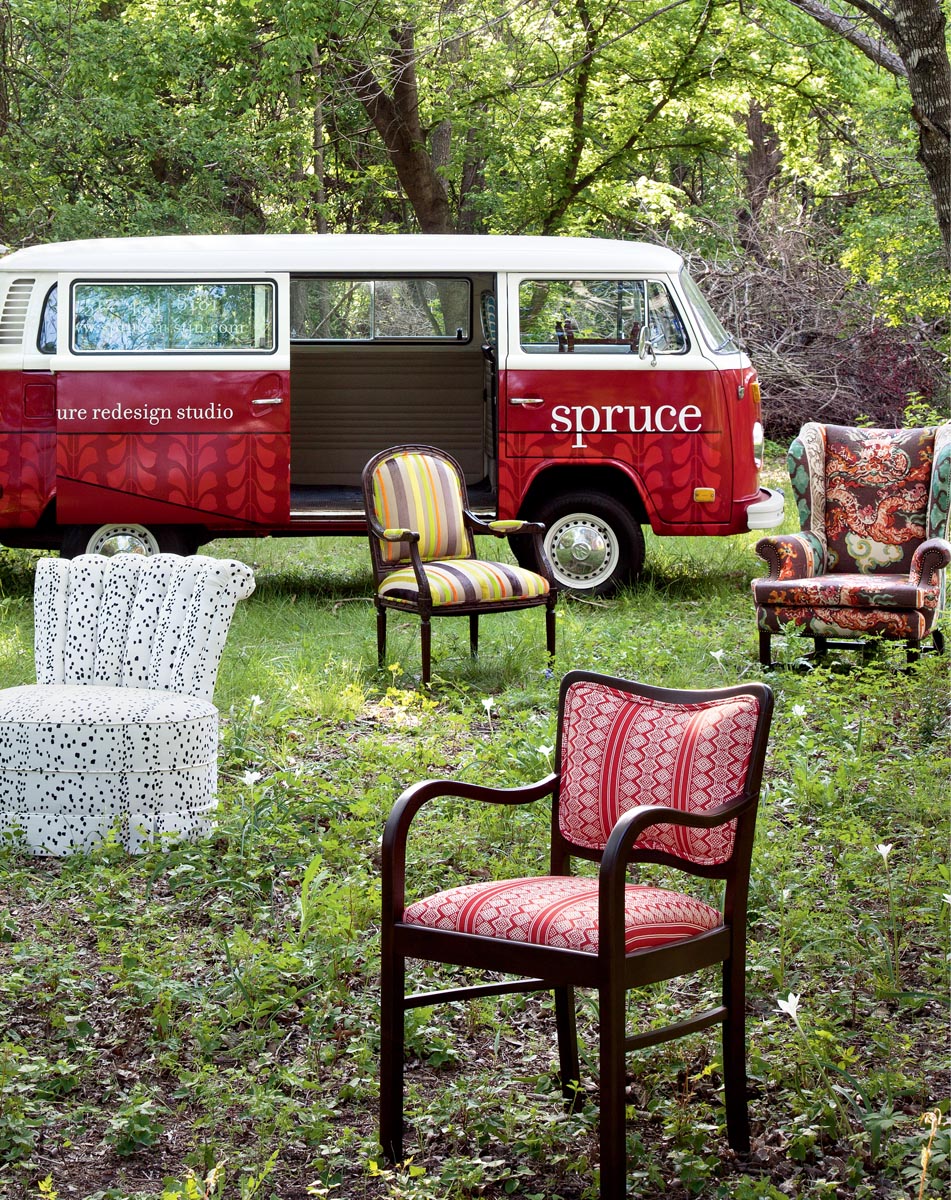
Amanda Brown led the wave of upholsterers who started looking at found and vintage furniture and reimagining it with bold, contemporary fabrics. In Amandas skillful hands, old sofas, chairs, and ottomans were transformed into hip new furniture for younger families, and the community noticed. Spruce may have started as a local Austin business, but the influence of Amandas work and taste has spread across the country.
Whether youre looking to reupholster your very first thrift store score or want to tackle every piece of furniture in your home, Amanda can teach you how. But she doesnt stop there. Her ideas for combining different fabrics and using found materials like vintage embroideries will open your eyes to all of the incredible ways you can give your old or used furniture new life. Trust Amanda. Shes been teaching students to reupholster for years now and youre all about to get a master class from a seriously talented and tastemaking master.
Grace Bonney, founder of Design*Sponge
Introduction
Several years ago, I lived in the quaintest garage apartment behind an old historic home in Austin, Texas. It had dormers, parquet floors, and just enough space for me, my cat, and the collection of treasures, new and old, I had accumulated over the years. One weekend, while I was away visiting family, an electrical spark caused a fire and burned it to the ground. I was devastated.
According to my insurance coverage, I could replace my treasures and furniture but had only a year. I tried to recreate my old space, with its vintage lamps, artwork, and furniture, all of which had been purchased on a shoestring budget from every hole-in-the-wall store between Austin and Lubbock. I quickly ran out of time and was forced into the big-box store. I purchased a chair, ottoman, sofa, and coffee table in a single day. White, beige, and blue. They didnt last long, and I dont mean they broke or wore out. Instead, I traded out, one by one, new for old, shapeless for shapely, until I had collected a living room of old furniture desperate for a makeover, but budding with potential.
I had upholstered a sofa once in college. It was $10.81 + tax from the Thrift Store for the Blind. My sister and two other roommates dragged it to our dorm room and used a cheap blue and beige plaid fabric to cover its stained exterior. Every piece of fabric was attached with safety pins, and we kept the sofa pushed against the wall to hide the abrupt termination of our upholstery job. After the fire, I had moved into a real house, was working my first real job, and didnt want to push every piece of furniture against the wall, so I saved up the money to have a professional upholsterer do the deed.
After the transformation of the first few pieces, my living room redo turned into an obsession. Each new piece prompted my search for another diamond in the rough and the next best fabric. The Spruce seed had sprouted. I could do this every day! I could be my own boss, sell rejuvenated vintage furniture, and quit the job that was leaving my creative bones dissatisfied.
I enrolled in three upholstery classes at the local community college and learned how to upholster the professional way (without safety pins). Before the end of the third class, I was taking clients and working graveyard shifts after my day job. I learned enough from my classes to get by, but I still felt unprepared for some projects. I searched high and low for videos, books, and any instruction to help me make my way into the upholstery profession. I found books, but as a beginner I was too new to understand the lingo, and the books I could understand were not thorough enough to help me with the nitty-gritty. I found a series of videos, which I watched only to discover unprofessional methods and lingering moments watching the wall. (Apparently the cameraman fell asleep, too!)
There was nothing to it but to do it. And I did. I quit my job and spent the next few years filling in the holes the hard way. It was the boot camp of upholstery. Twelve-hour days, six to seven days a week, fussing over padding, puckers, and . Im not going to lie: there were moments of tears, cussing, and breakdowns, but they were always followed by triumph and the euphoria that comes with making something beautiful with your own hands. And my projects comforted me after each battle. It was laborious, but it was love.

